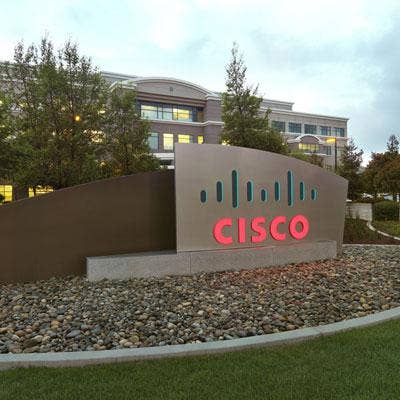4 Reasons Why Morgan Stanley Is Downgrading Cisco

Still Cause For Concern
Morgan Stanley has downgraded Cisco from an "overweight" rating to "equal weight" following the networking giant's positive fourth-quarter fiscal year 2015 earnings report last week that beat analysts' estimates.
According to the Morgan Stanley report, led by analyst James Faucette, Cisco has a tough road ahead due to "stiff" competitive playing fields, a "weak" product refresh cycle, and excessive research and development spending in order to prevent market share loss, according to a recent report. Faucette also doesn't expect the San Jose, Calif.-based company to make any "needle moving" acquisitions in the near future.
Although the firm downgraded Cisco, Morgan Stanley is still maintaining its $30 price target on the company's stock. Cisco declined to comment on the report.

Cisco Can't Cut Expensive R&D
As competition continues to grow, it's forcing Cisco to invest heavily in research and development, which limits long-term revenues. The report said Cisco can't, and won't, cut R&D costs despite slower growth because it wants to retain its customers.
" Cisco's competitors are increasing [spending] every year, despite a flat profit pool, causing Cisco to have to maintain elevated R&D [spending] in order to prevent loss of share," said Faucette. "Too much investment in a no profit growth industry essentially limits any long-term margin and ROI improvements, which we think limits any further multiple expansion."

Facing 'Stiff' Competition
Nearly 20 companies who went public in the last four years listed Cisco as a competitor on various fronts, such as networking, unified communications and security, including Arista Networks, FireEye and Palo Alto Networks.
"There continue to be high levels of venture capital investments in the networking, data center, storage, security sector ... showing not only the degree to which VCs are investing, but the degree to which they are getting successful enough outcomes," said Faucette.
These "successful outcomes" are likely to keep investment levels high, as well as pressure on Cisco. Cisco cannot cut OpEx "meaningfully" enough without risking losing ground to competitors, according to the report.

Recent Product Refresh Cycle Is 'Weak'
Although Cisco has refreshed much of its portfolio over the past year, Faucette sees a weak refresh cycle. The report notes the company has refreshed its routing, wireless, collaboration, security and switching portfolio -- with the Nexus 9K garnering most of the attention -- but very few of them are brand-new services or products.
"Despite the pent-up demand, this refresh cycle is set to be one of the weakest," said Faucette. "This highlights how IT budget priorities have shifted to security and applications, limiting spend to Cisco, even during a refresh." He estimates that Cisco growth will remain elevated in 2015 as the current upgrade plays out, but that growth will contract after its fiscal year 2016.

Robbins Won't Make Any 'Needle-Moving' Acquisitions
Faucette doubts Cisco's new CEO Chuck Robbins (pictured) will make a large acquisition in the near future that will contribute significantly to share price.
"We would not expect him to make large needle-moving acquisitions in the near term," said Faucette.
The report notes that Robbins has helped lead the execution of Cisco's previously blockbuster purchases of Sourcefire and Meraki Networks, but it doesn't see him approving any game-changing companies as he reorganizes his leadership management team. Over the past several months, several of Cisco's veteran leaders have left, including Rob Lloyd, president, development and sales; Gary Moore, president and chief operating officer; CTO Padmasree Warrior; Edzard Overbeek, the company's top services executive; and Channel Chief Bruce Klein.

Potential Catalysts For Growth
There are some possible catalysts that will help Cisco regain accelerated growth, including "aggressive" operating expense cuts, according to the report. Another potential catalyst would be a reduction in semiconductor CapEx.
Faucette also notes that the market was overly concerned about the short-term impacts of software-defined networking and network function virtualization on Cisco. Although SDN and OpenStack solutions limit margins for Cisco, SDN adoption has been slow and the networking giant's margins have remained high.
In a Morgan Stanley CIO survey, Cisco was considered the leading vendor for SDN implementations over several competitors, such as IBM, Hewlett-Packard and VMware, which limits the downside risk to Cisco.